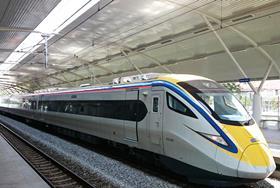Expressways currently serve as the primary arteries for the transportation and distribution of cargo across the nation, accounting for over 96% of all cargo movement relative to rail transport.
This reliance on road transport is not only financially burdensome, it also significantly compromises the safety of all road users.
Over and above the inevitable road congestion, the frequent serious and fatal traffic accidents, often involving freight vehicles, highlight the inherent dangers of the current system.
Overloaded lorries exacerbate the issue, causing substantial road damage and necessitating costly repairs.
Each year, the government allocates hundreds of millions of ringgit to road maintenance, funds that could be more effectively used elsewhere.
Cheaper by rail
Transporting goods by rail presents a more economical, and safer, alternative.
On a per tonne-kilometre basis, rail is considerably cheaper than road transport.
However, for the road to rail transition to succeed, government policy must incorporate a series of strategic initiatives and interventions.
Some suggestions follow.
Investment in rail infrastructure
- Allocate significant funding for the development and modernisation of rail infrastructure, including tracks, terminals and intermodal facilities.
- Ensure that rail networks are expanded and upgraded to handle increased freight volumes efficiently.
Regulatory measures
- Implement stricter regulations on road freight, such as tighter controls on lorry overloading and more rigorous safety inspections.
- Introduce policies that prioritise rail transport for certain types of cargo, especially heavy, bulk, and dangerous goods.
Environmental regulations
- Implement policies that account for the environmental impact of transportation, promoting rail as a more sustainable option compared to road transport.
- Offer carbon credits or other environmental incentives to businesses which reduce their carbon footprint by using rail transport.
Long-term strategic planning
- Develop a comprehensive national transportation plan that includes a clear vision and timeline for the transition from road to rail.
- Set specific targets for rail freight growth, and regularly review and adjust policies to meet them.
Streamlined logistics and operations
- Develop integrated logistics hubs that connect rail, road and port facilities, ensuring the smooth and efficient transfer of goods between different transport modes.
- Implement advanced logistics and tracking systems to optimise rail cargo scheduling and handling.
Capacity building and workforce training
- Invest in training programmes to develop a skilled workforce capable of operating and maintaining advanced rail systems.
- Promote research and development in rail technology to keep pace with global advancements and best practices.
Public awareness campaigns
- Launch campaigns to raise awareness among businesses about the economic and environmental benefits of rail transport.
- Educate the public on safety improvements and cost savings associated with a greater reliance on rail for freight movement.
One body corporate
To implement these measures and create a conducive environment for businesses to shift from road to rail, the government must revamp the present railway structure.
The current two-entity structure — with Railway Assets Corporation (RAC) as a superior body to rail operator KTMB — is untenable.
These two entities, both owned by the government, hinder the development and growth of the rail sector in Malaysia. They should be merged into one, as was the case prior to the 1992 split.
What Malaysia needs is a single corporation to manage and operate the entire rail network, similar to the Japanese and French railway models.
In this way, the operator can rise to the challenge of enhancing its capacity to handle increased cargo volumes.
This would involve investing in more dedicated cargo trains, acquiring more powerful locomotives capable of hauling heavier and longer freight trains, and developing new facilities to efficiently handle goods.
Given that many cargoes originate from ports, railway services should be designed to facilitate seamless transport from port to importer.
This would mean integrating rail infrastructure directly with port facilities and ensuring rail delivery as close to the final destination as possible.
Implementing such a strategy is essential for a sustainable shift from road to rail.
It will not only reduce transportation costs and improve safety but also alleviate the financial burden of road maintenance.
A modal shift is imperative for the long-term benefit of Malaysia’s economy and infrastructure.
